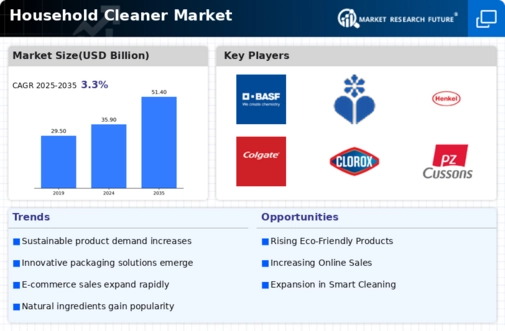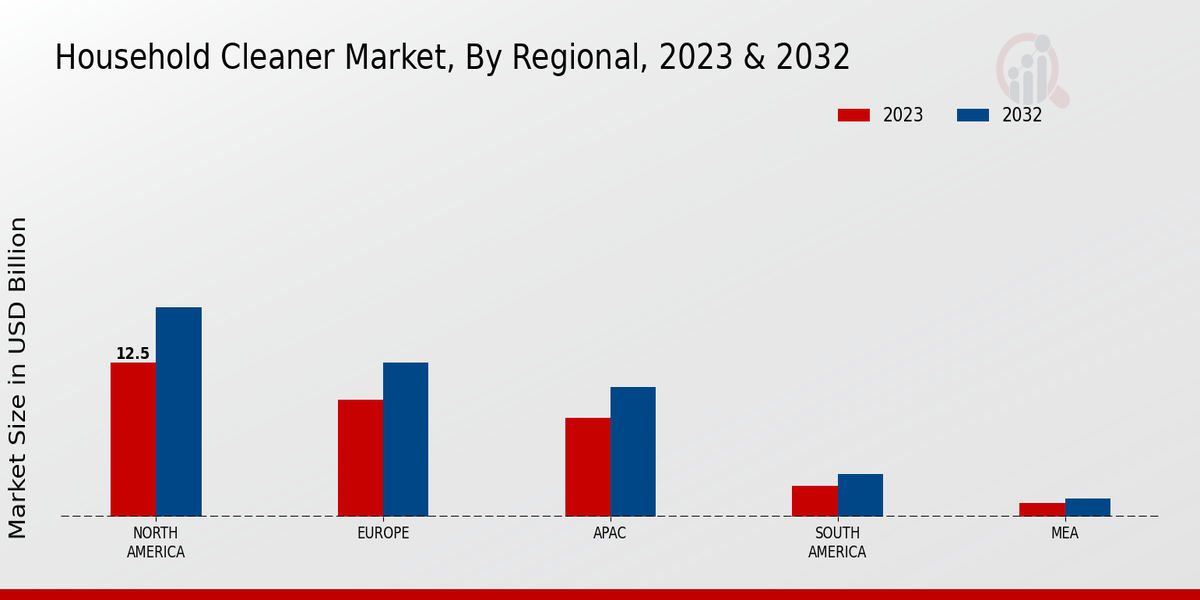The Household Cleaner Market is driven by increasing consumer awareness regarding hygiene and cleanliness. As people become more health-conscious, the demand for effective household cleaning products rises. This trend is particularly pronounced in urban areas where busy lifestyles lead to a greater need for convenient and efficient cleaning solutions. Additionally, the ongoing growth in online shopping has made these products more accessible, allowing consumers to explore a wider variety of options and brands.
Sustainability also plays a crucial role, with a growing shift toward eco-friendly and biodegradable cleaning agents that appeal to environmentally-conscious consumers.There are numerous opportunities to be explored within this market. Companies can enhance their product lines by focusing on natural and organic ingredients, providing consumers with safer alternatives to traditional chemical cleaners. The rise of interest in DIY cleaning solutions presents another avenue, with brands able to offer kits and guides to facilitate this trend.
Moreover, innovations in packaging, like refillable options, align with sustainability goals and can help companies distinguish themselves in a competitive marketplace. Recent trends show a marked shift towards multifunctional cleaning products that combine several cleaning tasks into one.The popularity of products designed to combat specific issues, such as allergens or germs, continues to increase. Consumers are seeking out products that not only clean but also offer additional benefits. Digital marketing strategies focusing on education and transparency about ingredients and their benefits are also gaining traction.
Overall, the market reflects a dynamic landscape where cleanliness, health, and sustainability converge, creating a fertile ground for ongoing innovation and growth in household cleaning solutions.
The ongoing shift towards eco-friendly and sustainable cleaning products is reshaping consumer preferences in the household cleaner market, reflecting a growing awareness of environmental impacts and health considerations.
U.S. Environmental Protection Agency











